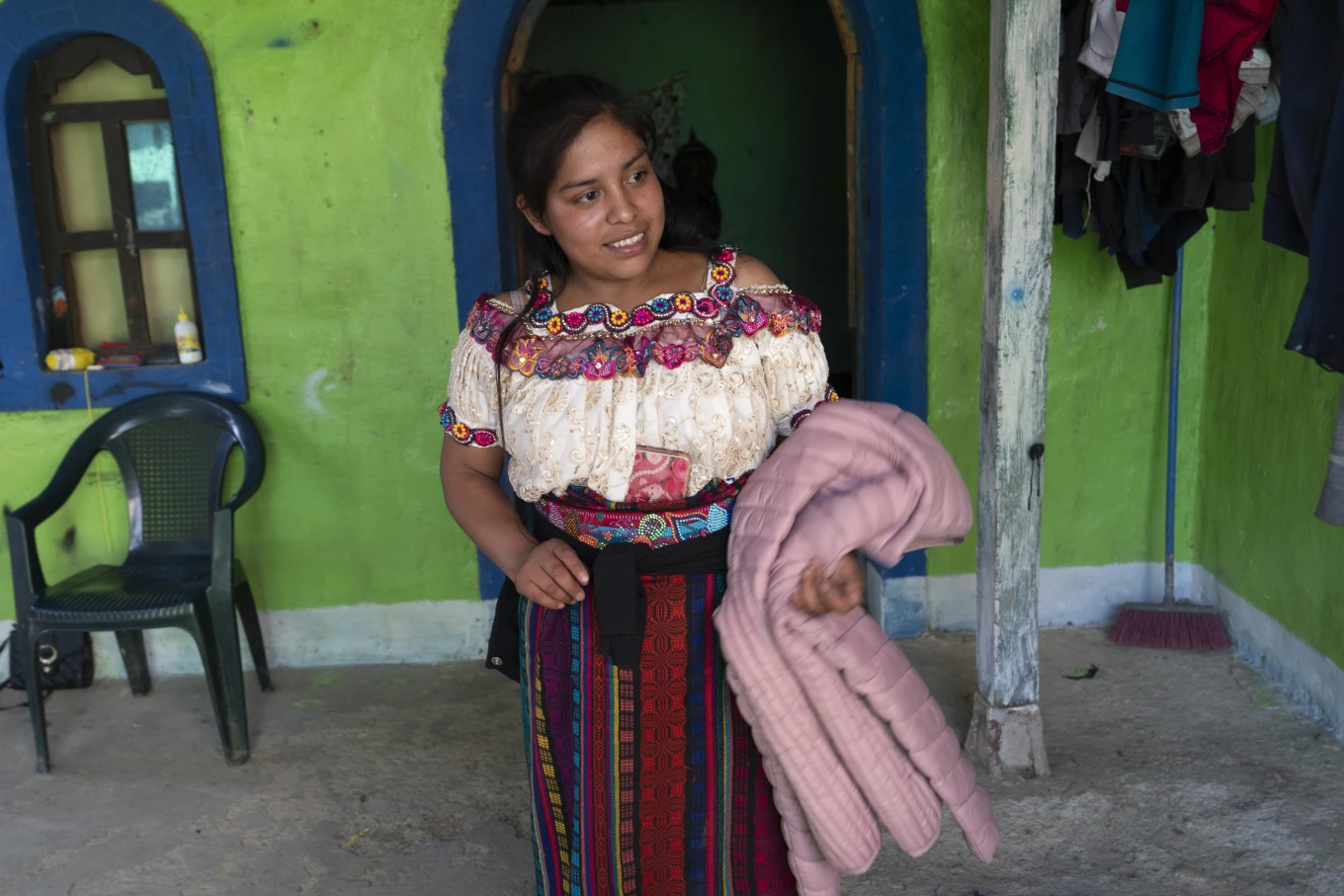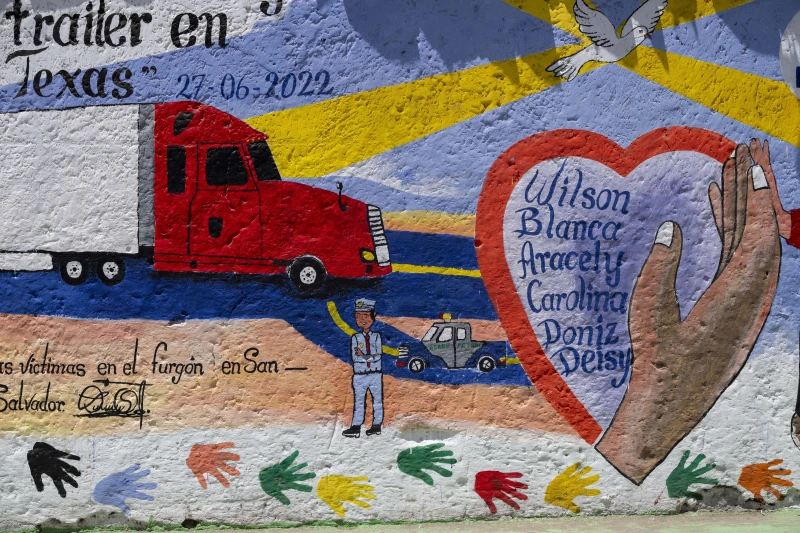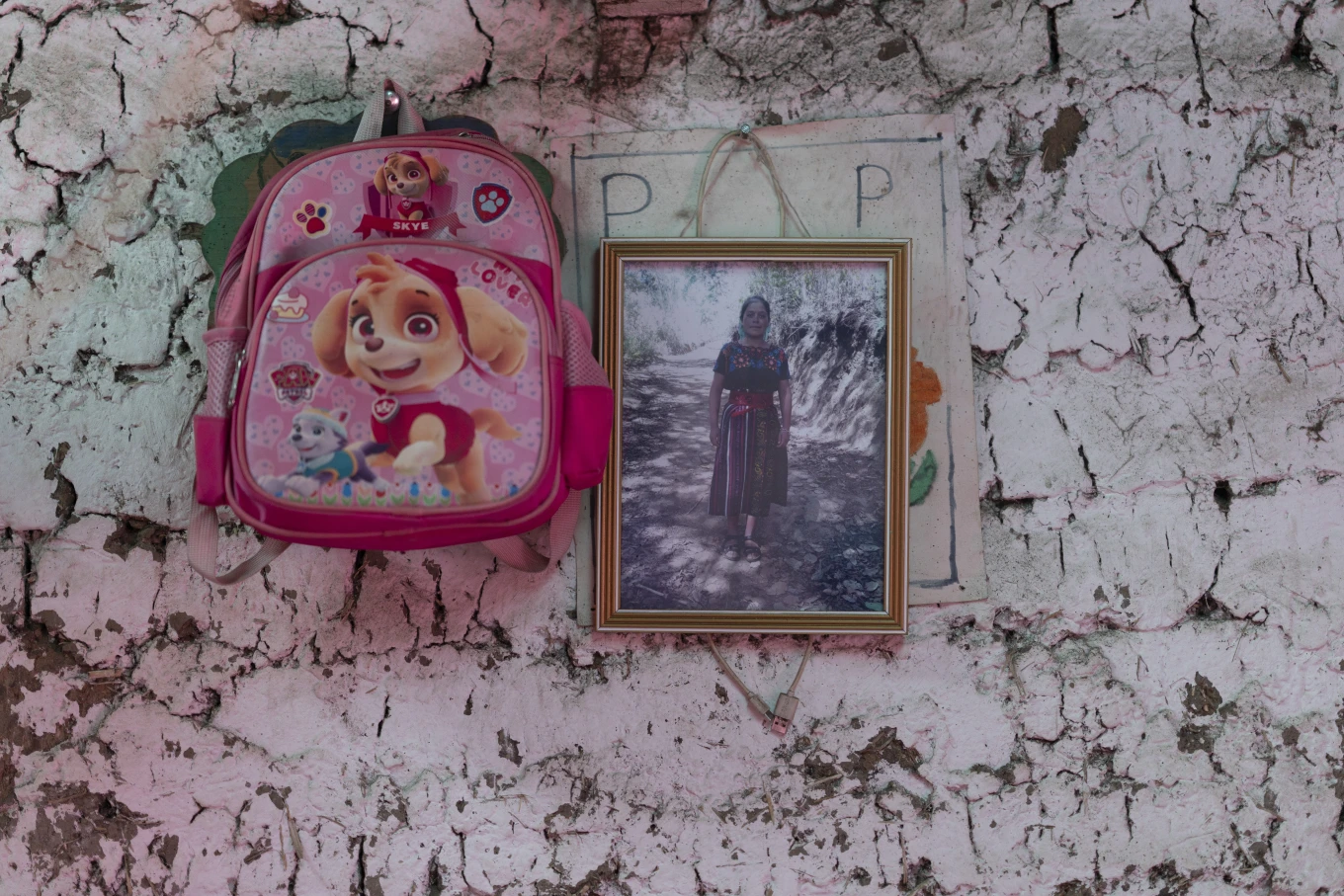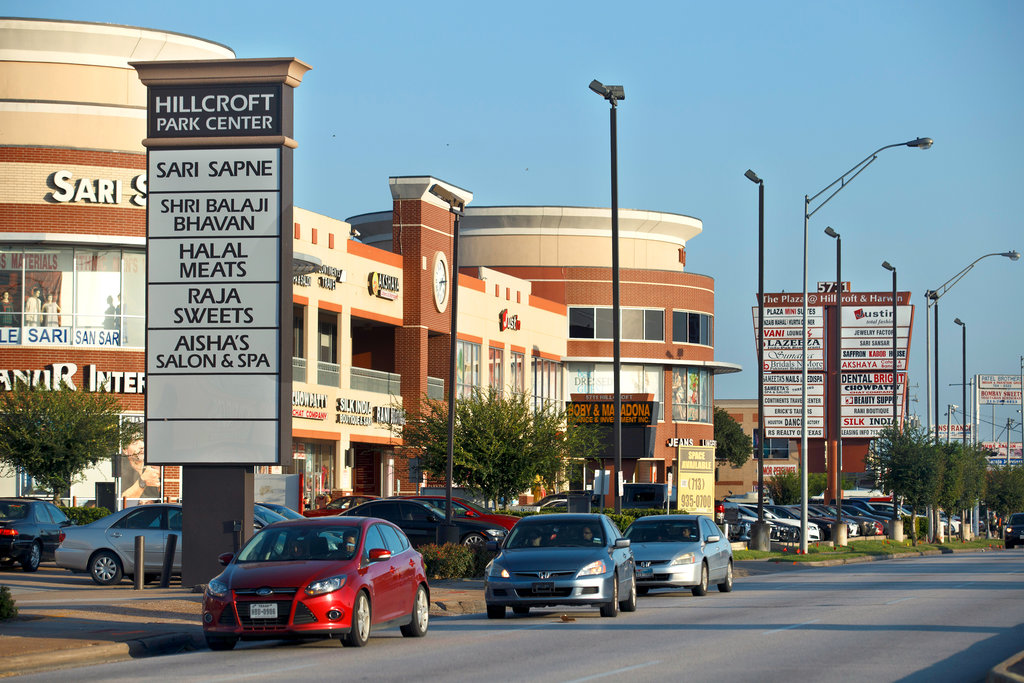- Joined
- Jan 17, 2010
- Messages
- 4,853
- Reaction score
- 5,954
BY GIOVANNA DELL’ORTO
Updated 2:51 PM BRT, April 10, 2024
COMITANCILLO, Guatemala (AP) — Every night for nearly two years, Glendy Aracely Ramírez has prayed by the altar in her parents’ mud-brick bedroom where, under a large crucifix, is a picture of her sister Blanca. The 23-year-old died alongside 50 other migrants in a smuggler’s tractor-trailer in Texas.
“I ask God for my family’s health and that I might get to the United States one day. My mom asks God that she won’t have to see another accident,” said Glendy, 17, who has already packed a small backpack for her own journey from the family’s home 8,900 feet (2,700 meters) up in Guatemala’s highlands.
Her “coyote” postponed it for a few days because of a flare-up in violence among Mexican drug cartels that control migrants’ routes to the United States, but she is undeterred.

Glendy Aracely Ramirez shows a jacket she bought for her planned migration to the U.S. in her Loma Linda hamlet of Comitancillo, Guatemala, Monday, March 18, 2024. (AP Photo/Moises Castillo)
Tens of thousands of youths from this region would rather take deadly risks — even repeatedly — than stay behind where they see no future. Blanca’s fatal journey was her third attempt to reach the U.S.
“I want to go there, because here there are no opportunities, even though Mom says that I’ll suffer what Blanca did,” Glendy said as she sat with her mother, Filomena Crisóstomo, in their tidy dirt-floor courtyard. “I’d like to have a house, help my family and get ahead.”
The record-high numbers of migrants illegally crossing the U.S.-Mexico border have made migration a top concern in this U.S. presidential election year. Among those migrants, the largest group of unaccompanied minors has been from Guatemala — nearly 50,000 of the 137,000 encounters recorded by border authorities in the last fiscal year.
Most come from tiny hamlets in the predominantly Indigenous Western Highlands. Daily wages top out around the equivalent of $9, far below the supposed legal minimum. In tiny plots of brittle clay soil — often the only collateral for loans to pay smugglers’ fees that can reach $20,000 — many families grow corn and beans to eat.
Little else sprouts from the steep mountainsides except for the exuberantly decorated, multi-story concrete homes built with remittances from loved ones in the United States — constant reminders of what’s possible if only one makes it “to the north.”

A home built with migrant remittances stands in the Loma Linda hamlet of Comitancillo, Guatemala, Monday, March 18, 2024. (AP Photo/Moises Castillo)
In the small town of Comitancillo, two murals serve as a different reminder — they’re memorials to the nearly two dozen local migrants who died in recent mass tragedies. They either asphyxiated in the trailer in San Antonio, Texas, in June 2022, or were shot and set afire by rogue police officers in Camargo, Mexico, in January 2021.
It took less than a week after the remains from the Camargo massacre were returned to Comitancillo for burial before the first surviving family member left for the U.S.
And with a 17-year-old boy who made it to Florida this winter, now at least one relative has migrated from nearly all of the families since the massacre, said the Rev. José Luis González, a priest with the Jesuit Migration Network. The lone exception was an older man whose family was already north of the border; he died trying to make it back after being deported, González said.

A list of young migrants who died asphyxiated in 2022 in a smuggler’s trailer truck in San Antonio, Texas, covers a wall in their hometown of Comitancillo, Guatemala, Tuesday, March 19, 2024. Tens of thousands of youth from this region would rather take deadly risks, even repeatedly, than stay behind where they see no future. (AP Photo/Moises Castillo)
“It’s an evident sign that the fear to stay is bigger than the fear to go,” said González, who started ministering to the affected families when they traveled some six hours to Guatemala’s capital for DNA tests to identify the remains.
Many families credit the Jesuit group for being the only institution that has stayed by their side, regularly traveling to Comitancillo to provide legal updates — nearly a dozen police officers were sentenced last fall in the Camargo case — as well psychological, humanitarian and pastoral assistance.
On a recent morning, about 50 relatives of those lost either in Camargo or San Antonio gathered for a meeting with the Jesuit group that included workshops to process depression and grief. Most were women and children speaking Mam, one of Guatemala’s two dozen Mayan languages.
One of the handful of fathers at the meeting was Virgilio Ambrocio. The eldest of his eight children, Celestina Carolina, was making less than $90 a month as a housekeeper in Guatemala City and sending half of that back home to help feed her siblings. So she decided to try her luck in the United States, and died at 23 in the trailer.
“The hardest part is, who’s going to help us now,” Ambrocio said as dust swirled around his home. His wife, Olivia Orozco, wept silently, while holding a framed photo of a smiling Celestina.

Indigenous women attend a support group during an event organized by the Jesuit Migrant Network that provides support to the relatives of migrants who died trying to reach the U.S. in Comitancillo, Guatemala, Monday, March 18, 2024. Many families credit the Jesuit group for being the only institution that has stayed by their side, regularly traveling to Comitancillo to provide legal updates as well as psychological, humanitarian, and pastoral assistance. (AP Photo/Moises Castillo)
The primary driver of migration over the past 10 years is the inability to get jobs to pay for the most basic necessities, said Ursula Roldán, a researcher at Rafael Landívar University in Guatemala City. That’s exacerbated by the debts families incur to pay the smugglers, which would take 10 years’ worth of in-country wages to repay — making it crucial to get to the U.S. and send back remittances from far higher wages.
Rising violence in the Mexican regions bordering Guatemala is also pushing more migrants to head to the U.S. instead of working seasonal agricultural jobs there. Climate change is affecting even subsistence farming.
In their one-room home near Comitancillo, Reina Coronado tried to convince the eight children she had since she married at 16 that they didn’t have to risk their lives.

A portrait of Aracely Marroquín Coronado, who died in 2022 alongside 50 other migrants, asphyxiated in a smuggler’s trailer truck in San Antonio, Texas, hangs inside a relatives’ home in Comitancillo, Guatemala, Tuesday, March 19, 2024. (AP Photo/Moises Castillo)
Some went north anyway, including Aracely Florentina Marroquín, 21, who had completed high school like Blanca and, like her, felt she had wasted her family’s money in studying since she still couldn’t get a professional job.
The last thing she told Coronado was that she’d go only for four years and send money to build a kitchen, so she wouldn’t have to cook tortillas over an open fire. Next came the call from Texas that made Coronado cry for months. Today, she finds some comfort caring for two young daughters still living with her and the animals she raises.
“Even though it’s a struggle, one has to fight, to try to keep going,” Coronado said. “I go to work and that way the day, and the hard moments, pass. Sometimes I do it crying, but I trust in our Father, the Lord.”
Marcelina Tomás has also been praying for strength since her oldest son, Anderson Pablo, was murdered in Camargo — and especially in recent months since his younger brother Emerson, 17, also went to the U.S.
Anderson was in 9th grade when the pandemic hit and he started working in the fields alongside his father. Their wages of around $6 a day were enough to afford tortillas each day for the family of 11, but not something to go with them, Tomás said. So she and her husband agreed to help Anderson get loans for the $16,000 smuggling fee.
Twelve days after Anderson, 16, left their home near Comitancillo, news of the Camargo massacre arrived via social media. Pregnant with her tenth child, Tomás, 37, had to leave her children with family members and spend a night away from home for the first time to undergo DNA tests in the capital that allowed Anderson’s partial remains to be identified and buried.
“Only God knows what happened. And all for wanting to get ahead,” Tomás said. “I relied on him, and he treated his little siblings so well.”
Anderson had dissuaded Emerson from going along, saying he should stay in school a bit longer. According to Tomás, Emerson was heartbroken after his brother’s death; he enrolled in high school, but soon quit to work in a potato field.
Around the third anniversary of Anderson’s death, Emerson said he wanted to migrate, because many other youths had gone too. Tomás reminded him of Anderson’s fate, the tragedy in San Antonio, the neighbors’ children who died in the border deserts or in work accidents in the U.S.
“‘No,’ he told me, ‘I’m going.’ And he went,” Tomás said by the altar where three pictures of Anderson stand by a crucifix, with a lit candle and a vase of calla lilies.
Anderson’s dream was to earn enough to move the family from their one-room, mud-brick house to a concrete one with separate spaces for his parents, his brothers and his sisters. They live in such a house now, built with donations received after his death.
But nobody sleeps in the room with the altar. They’re keeping it as Anderson’s room.

Children run past a mural memorializing 19 locals who were shot and burned in Camargo, Mexico, as they attempted to migrate to the U.S., in Comitancillo, Guatemala, Tuesday, March 19, 2024. (AP Photo/Moises Castillo)
https://apnews.com/article/immigrat...genous-faith-6c919ad842feac8d42f90ed9f9c871ec
Updated 2:51 PM BRT, April 10, 2024
COMITANCILLO, Guatemala (AP) — Every night for nearly two years, Glendy Aracely Ramírez has prayed by the altar in her parents’ mud-brick bedroom where, under a large crucifix, is a picture of her sister Blanca. The 23-year-old died alongside 50 other migrants in a smuggler’s tractor-trailer in Texas.
“I ask God for my family’s health and that I might get to the United States one day. My mom asks God that she won’t have to see another accident,” said Glendy, 17, who has already packed a small backpack for her own journey from the family’s home 8,900 feet (2,700 meters) up in Guatemala’s highlands.
Her “coyote” postponed it for a few days because of a flare-up in violence among Mexican drug cartels that control migrants’ routes to the United States, but she is undeterred.
Glendy Aracely Ramirez shows a jacket she bought for her planned migration to the U.S. in her Loma Linda hamlet of Comitancillo, Guatemala, Monday, March 18, 2024. (AP Photo/Moises Castillo)
Tens of thousands of youths from this region would rather take deadly risks — even repeatedly — than stay behind where they see no future. Blanca’s fatal journey was her third attempt to reach the U.S.
“I want to go there, because here there are no opportunities, even though Mom says that I’ll suffer what Blanca did,” Glendy said as she sat with her mother, Filomena Crisóstomo, in their tidy dirt-floor courtyard. “I’d like to have a house, help my family and get ahead.”
The record-high numbers of migrants illegally crossing the U.S.-Mexico border have made migration a top concern in this U.S. presidential election year. Among those migrants, the largest group of unaccompanied minors has been from Guatemala — nearly 50,000 of the 137,000 encounters recorded by border authorities in the last fiscal year.
Most come from tiny hamlets in the predominantly Indigenous Western Highlands. Daily wages top out around the equivalent of $9, far below the supposed legal minimum. In tiny plots of brittle clay soil — often the only collateral for loans to pay smugglers’ fees that can reach $20,000 — many families grow corn and beans to eat.
Little else sprouts from the steep mountainsides except for the exuberantly decorated, multi-story concrete homes built with remittances from loved ones in the United States — constant reminders of what’s possible if only one makes it “to the north.”
A home built with migrant remittances stands in the Loma Linda hamlet of Comitancillo, Guatemala, Monday, March 18, 2024. (AP Photo/Moises Castillo)
In the small town of Comitancillo, two murals serve as a different reminder — they’re memorials to the nearly two dozen local migrants who died in recent mass tragedies. They either asphyxiated in the trailer in San Antonio, Texas, in June 2022, or were shot and set afire by rogue police officers in Camargo, Mexico, in January 2021.
It took less than a week after the remains from the Camargo massacre were returned to Comitancillo for burial before the first surviving family member left for the U.S.
And with a 17-year-old boy who made it to Florida this winter, now at least one relative has migrated from nearly all of the families since the massacre, said the Rev. José Luis González, a priest with the Jesuit Migration Network. The lone exception was an older man whose family was already north of the border; he died trying to make it back after being deported, González said.
A list of young migrants who died asphyxiated in 2022 in a smuggler’s trailer truck in San Antonio, Texas, covers a wall in their hometown of Comitancillo, Guatemala, Tuesday, March 19, 2024. Tens of thousands of youth from this region would rather take deadly risks, even repeatedly, than stay behind where they see no future. (AP Photo/Moises Castillo)
“It’s an evident sign that the fear to stay is bigger than the fear to go,” said González, who started ministering to the affected families when they traveled some six hours to Guatemala’s capital for DNA tests to identify the remains.
Many families credit the Jesuit group for being the only institution that has stayed by their side, regularly traveling to Comitancillo to provide legal updates — nearly a dozen police officers were sentenced last fall in the Camargo case — as well psychological, humanitarian and pastoral assistance.
On a recent morning, about 50 relatives of those lost either in Camargo or San Antonio gathered for a meeting with the Jesuit group that included workshops to process depression and grief. Most were women and children speaking Mam, one of Guatemala’s two dozen Mayan languages.
One of the handful of fathers at the meeting was Virgilio Ambrocio. The eldest of his eight children, Celestina Carolina, was making less than $90 a month as a housekeeper in Guatemala City and sending half of that back home to help feed her siblings. So she decided to try her luck in the United States, and died at 23 in the trailer.
“The hardest part is, who’s going to help us now,” Ambrocio said as dust swirled around his home. His wife, Olivia Orozco, wept silently, while holding a framed photo of a smiling Celestina.
Indigenous women attend a support group during an event organized by the Jesuit Migrant Network that provides support to the relatives of migrants who died trying to reach the U.S. in Comitancillo, Guatemala, Monday, March 18, 2024. Many families credit the Jesuit group for being the only institution that has stayed by their side, regularly traveling to Comitancillo to provide legal updates as well as psychological, humanitarian, and pastoral assistance. (AP Photo/Moises Castillo)
The primary driver of migration over the past 10 years is the inability to get jobs to pay for the most basic necessities, said Ursula Roldán, a researcher at Rafael Landívar University in Guatemala City. That’s exacerbated by the debts families incur to pay the smugglers, which would take 10 years’ worth of in-country wages to repay — making it crucial to get to the U.S. and send back remittances from far higher wages.
Rising violence in the Mexican regions bordering Guatemala is also pushing more migrants to head to the U.S. instead of working seasonal agricultural jobs there. Climate change is affecting even subsistence farming.
In their one-room home near Comitancillo, Reina Coronado tried to convince the eight children she had since she married at 16 that they didn’t have to risk their lives.
A portrait of Aracely Marroquín Coronado, who died in 2022 alongside 50 other migrants, asphyxiated in a smuggler’s trailer truck in San Antonio, Texas, hangs inside a relatives’ home in Comitancillo, Guatemala, Tuesday, March 19, 2024. (AP Photo/Moises Castillo)
Some went north anyway, including Aracely Florentina Marroquín, 21, who had completed high school like Blanca and, like her, felt she had wasted her family’s money in studying since she still couldn’t get a professional job.
The last thing she told Coronado was that she’d go only for four years and send money to build a kitchen, so she wouldn’t have to cook tortillas over an open fire. Next came the call from Texas that made Coronado cry for months. Today, she finds some comfort caring for two young daughters still living with her and the animals she raises.
“Even though it’s a struggle, one has to fight, to try to keep going,” Coronado said. “I go to work and that way the day, and the hard moments, pass. Sometimes I do it crying, but I trust in our Father, the Lord.”
Marcelina Tomás has also been praying for strength since her oldest son, Anderson Pablo, was murdered in Camargo — and especially in recent months since his younger brother Emerson, 17, also went to the U.S.
Anderson was in 9th grade when the pandemic hit and he started working in the fields alongside his father. Their wages of around $6 a day were enough to afford tortillas each day for the family of 11, but not something to go with them, Tomás said. So she and her husband agreed to help Anderson get loans for the $16,000 smuggling fee.
Twelve days after Anderson, 16, left their home near Comitancillo, news of the Camargo massacre arrived via social media. Pregnant with her tenth child, Tomás, 37, had to leave her children with family members and spend a night away from home for the first time to undergo DNA tests in the capital that allowed Anderson’s partial remains to be identified and buried.
“Only God knows what happened. And all for wanting to get ahead,” Tomás said. “I relied on him, and he treated his little siblings so well.”
Anderson had dissuaded Emerson from going along, saying he should stay in school a bit longer. According to Tomás, Emerson was heartbroken after his brother’s death; he enrolled in high school, but soon quit to work in a potato field.
Around the third anniversary of Anderson’s death, Emerson said he wanted to migrate, because many other youths had gone too. Tomás reminded him of Anderson’s fate, the tragedy in San Antonio, the neighbors’ children who died in the border deserts or in work accidents in the U.S.
“‘No,’ he told me, ‘I’m going.’ And he went,” Tomás said by the altar where three pictures of Anderson stand by a crucifix, with a lit candle and a vase of calla lilies.
Anderson’s dream was to earn enough to move the family from their one-room, mud-brick house to a concrete one with separate spaces for his parents, his brothers and his sisters. They live in such a house now, built with donations received after his death.
But nobody sleeps in the room with the altar. They’re keeping it as Anderson’s room.
Children run past a mural memorializing 19 locals who were shot and burned in Camargo, Mexico, as they attempted to migrate to the U.S., in Comitancillo, Guatemala, Tuesday, March 19, 2024. (AP Photo/Moises Castillo)
https://apnews.com/article/immigrat...genous-faith-6c919ad842feac8d42f90ed9f9c871ec



